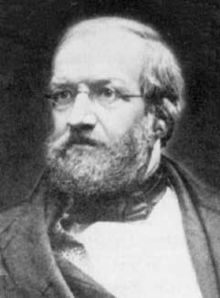
Back Dirichletov integral BS انتگرال دیریکله Persian Intégrale de Dirichlet French אינטגרל דיריכלה HE Integral Dirichlet ID ディリクレ積分 Japanese អាំងតេក្រាលឌីរិចឡេ Cambodian डिरिचलेट अविभाज्य Marathi Интеграл Дирихле Russian 狄利克雷積分 Chinese

| Part of a series of articles about |
| Calculus |
|---|
In mathematics, there are several integrals known as the Dirichlet integral, after the German mathematician Peter Gustav Lejeune Dirichlet, one of which is the improper integral of the sinc function over the positive real line:
This integral is not absolutely convergent, meaning has infinite Lebesgue or Riemann improper integral over the positive real line, so the sinc function is not Lebesgue integrable over the positive real line. The sinc function is, however, integrable in the sense of the improper Riemann integral or the generalized Riemann or Henstock–Kurzweil integral.[1][2] This can be seen by using Dirichlet's test for improper integrals.
It is a good illustration of special techniques for evaluating definite integrals, particularly when it is not useful to directly apply the fundamental theorem of calculus due to the lack of an elementary antiderivative for the integrand, as the sine integral, an antiderivative of the sinc function, is not an elementary function. In this case, the improper definite integral can be determined in several ways: the Laplace transform, double integration, differentiating under the integral sign, contour integration, and the Dirichlet kernel.
- ^ Bartle, Robert G. (10 June 1996). "Return to the Riemann Integral" (PDF). The American Mathematical Monthly. 103 (8): 625–632. doi:10.2307/2974874. JSTOR 2974874. Archived from the original (PDF) on 18 November 2017. Retrieved 10 June 2017.
- ^ Bartle, Robert G.; Sherbert, Donald R. (2011). "Chapter 10: The Generalized Riemann Integral". Introduction to Real Analysis. John Wiley & Sons. pp. 311. ISBN 978-0-471-43331-6.
© MMXXIII Rich X Search. We shall prevail. All rights reserved. Rich X Search


